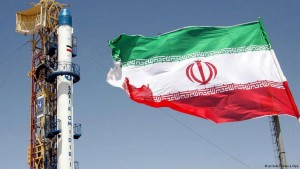
In the space of one week Iranian space officials have simultaneously announced plans to start their own satellite navigation programme and that an old satellite built by an Italian company is too expensive to launch and so will be consigned to a space museum.
To anyone who closely observes Iranian space developments it is enough to cause conceptual whiplash – how does a space enterprise that wants to create its own positioning, navigation, and timing (PNT) capability in a world awash with free-to-use PNT capabilities, while at the same time admits that it cannot afford to launch a years-old, U.S.$10 million small satellite, function?
Coherence is not a prerequisite for a space policy, but it helps. Further, Iran is not the only space power incapable of matching reality to rhetoric, outsized ambitions to economic realities, but it is certainly among the best at self-inflicted discombobulation.
As always, details of Iran’s space programme are scarce but the rhetoric soars like an eagle.
Mojtaba Saradeghi, a deputy director of the Iran Space Agency (ISA), recently told Iranian media that the ISA plans to develop an indigenous PNT capability. Saradeghi said that the PNT programme is a long-term one and that the ISA is still figuring out how it will be funded.
This is despite the fact that Iran has free access to a variety of PNT capabilities, including Russia’s GLONASS and China’s Beidou PNT systems. Iran also uses the basic services provided by the U.S. Global Positioning System (GPS), and will have similar access to Europe’s Galileo and India’s IRNSS NAVIC systems once they are operational.
Further, PNT systems are difficult and expensive to develop, build, and maintain even by the standards of large, complex satellite constellations.
Historically, Iran always seeks strategic autonomy when it comes to strategic systems, but given the plethora of PNT systems freely available from a range of countries, Iran’s quest for its own PNT capability seems particularly misplaced.
Contrast the announcement about Iranian ambitions to develop its own PNT capability with that of Mohsen Bahrami, the head of the ISA, who told Iranian journalists on July 2, 2017, that the Mesbah communications satellite built over 15 years ago by Italian company Carlo Gavazzi Space S.p.A., will not be launched due to a lack of funds. Instead, Mesbah will be placed in an as yet unidentified space museum in Iran.
The Mesbah (Farsi for ‘Lantern’) satellite was seized by Italy and Russia just prior to its scheduled launch in 2006, due to the imposition of the international sanctions regime in response to concerns about Iran’s nuclear programme.
Mesbah, a low-Earth orbit communications satellite, was cooperatively built by the Iran Telecommunications Research Centre (ITRC), Iranian Electronics Industry Organisation, the Iranian Research Organisation for Science and Technology (IROST), and the Iranian Institute of Applied Research, along with the Italian satellite manufacturer Carlo Gavazzi Space S.p.A.
Iranian engineers and technicians worked on Mesbah at Carlo Gavazzi Space, which is headquartered in Milan, Italy, and now owned by German satellite company OHB Technology.
The Mesbah satellite was built between 1999 and 2001, and planning for the project began in 1997 by the Iranian government when President Muhammad Khatami was in office.
The Mesbah programme was thought to have cost US$10 million, and weighs 65 kilograms. It was built to have an operational lifetime of three years, but its builders expected it to operate for up to five years. Mesbah was supposed to have been launched by Russia in 2006 before both Rome and Moscow decided to seize the satellite citing international sanctions against Iran.
Iran has been in negotiations with Italian authorities since at least early 2016, and by all accounts these talks are still ongoing.
For observers and analysts of the Iranian space programme, these two developments reveal possible weaknesses.
First, funding is obviously an issue since the ISA is unable to afford to launch Mesbah or, for that matter, any other satellite built in Iran in recent years. For all the frequent press reports quoting senior Iranian space officials that launches are imminent there has been nothing to show for quite some time.
Second, funding aside, Iran’s self-touted space launch capability is obviously incapable of lofting its small satellites into orbit. If they were, we will have seen at least attempts to do so by now. Instead, Iran is obviously reliant upon expensive and foreign launch providers, in particular Russia and possibly China.
Third, Iran, like many other space powers, is prone to political grandstanding when it comes to space but incoherence and poor implementation when it comes to space policy, decision-making, strategic planning, and coordination. Hence, within days of each other, the announcement to build its own satellite navigation system while at the same time revealing it cannot afford to launch an old US$10 million satellite.
The last point is likely due to the sclerotic, corrupt, and unreformed Iranian economy and the ongoing political rivalry between reformist elements in Iran and hardliners such as those close to Ayatollah Khameini and the Islamic Revolutionary Guard Corps (IRGC).
It should not be surprising to discover that the Iranian space enterprise finds itself the victim of general Iranian economic decrepitude while being at the centre of political machinations beyond its control, crippling engineering and scientific talent and quashing even the most modest of ambitions.
Original published at: https://spacewatch.global/2017/07/irans-space-programme-political-football-amidst-economic-decrepitude/
 SpaceWatch.Global An independent perspective on space
SpaceWatch.Global An independent perspective on space

